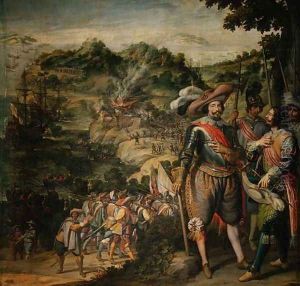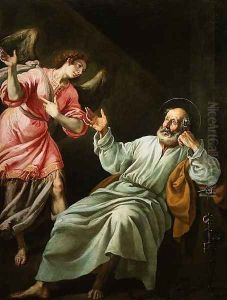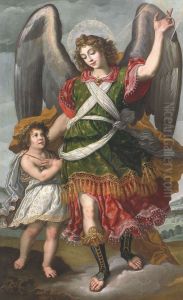Felix Castello Paintings
Felix Castello was a notable Spanish painter and draughtsman of the Baroque period, born in Valencia in 1595. Although not as widely recognized as some of his contemporaries, Castello made significant contributions to the Spanish art scene of the 17th century, particularly in the realms of religious and historical painting. His works are characterized by their detailed execution, vibrant color palette, and dynamic compositions, reflecting the broader artistic trends of the Baroque era in Spain.
Castello's early life and training are somewhat obscure, but it is believed that he was a pupil of Francisco Ribalta, or at least was strongly influenced by Ribalta's style. This connection is evident in Castello's adept use of chiaroscuro and his focus on the emotional intensity of religious subjects. Throughout his career, Castello worked primarily in Valencia, where he was well-regarded among the local nobility and religious institutions for his skillful portrayals of biblical scenes and saints. His works were known to evoke a deep sense of piety and devotion, making him a favored artist for church commissions.
Despite his success, Felix Castello's life was not without challenges. The details of his personal life are scarce, but records suggest he struggled with financial difficulties, a common plight for artists of the time. Nevertheless, he continued to produce works of high quality and was respected by his peers for his dedication to his craft.
Castello's death in 1651 marked the end of a career that had significantly contributed to the Baroque artistic movement in Spain. While his fame may have been eclipsed by other giants of Spanish art, such as Velázquez or El Greco, Castello's work remains an important part of the study of Spanish Baroque art. His paintings can still be seen in various museums and churches in Spain, where they continue to be admired for their beauty and emotional depth.
In summary, Felix Castello was an artist whose work embodied the spirit of the Baroque in Spain. Through his paintings, he explored themes of faith, human emotion, and the divine, leaving behind a legacy that, while not as widely celebrated as some of his peers, is deeply valued by art historians and enthusiasts alike.


